Best Kimchi Brands: Our Top Picks for Delicious and Authentic Flavours
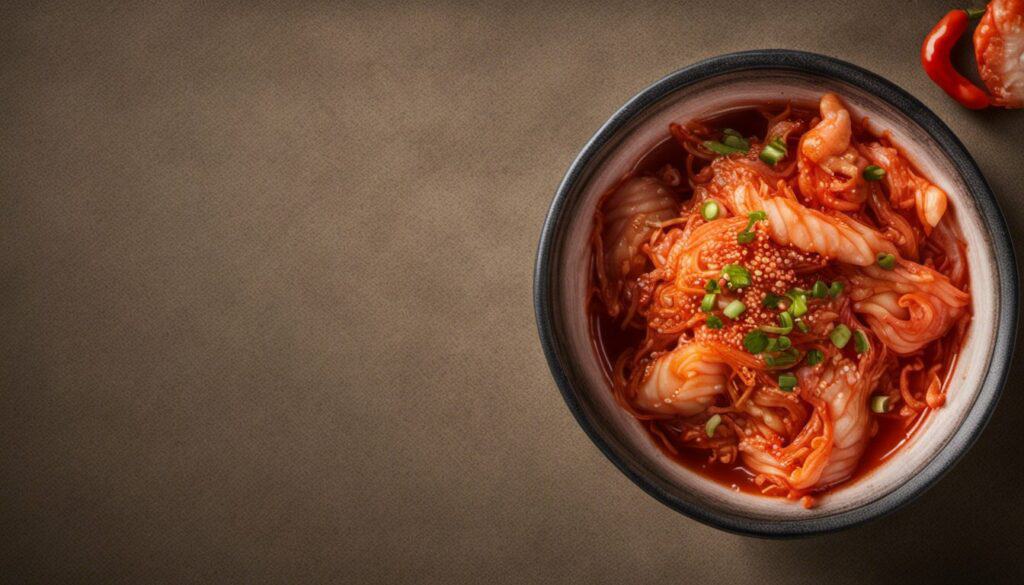
Kimchi is a traditional Korean dish that has been enjoyed for centuries. It is a spicy and tangy fermented side dish made from vegetables, usually cabbage, and a variety of seasonings. Kimchi is not only delicious but also has numerous health benefits, making it a popular dish around the world.
If you are a fan of kimchi or would like to try it for the first time, you may be wondering which brands are the best. With so many options available, it can be challenging to choose. In this article, we will introduce you to the best kimchi brands on the market, based on taste, quality, and popularity.
Whether you prefer it mild or spicy, vegan or traditional, we have got you covered. So, let’s dive into the world of kimchi and explore the top brands that you should try.
Key Takeaways
- Kimchi is a traditional Korean dish that is spicy and tangy, made from vegetables and seasonings.
- There are many kimchi brands available, making it difficult to choose the best one.
- We have compiled a list of the top kimchi brands based on taste, quality, and popularity.
Understanding Kimchi

Kimchi is a traditional Korean dish that has become increasingly popular worldwide for its unique flavour, nutritional benefits, and health properties. In this section, we will delve into the history and significance of kimchi.
Origin and Significance in Korea
Kimchi has been a staple in Korean cuisine for centuries and is deeply rooted in Korean culture. It is estimated that there are over 200 different types of kimchi, each with its own distinct flavour and texture.
Kimchi is typically made from fermented vegetables, most commonly Napa cabbage, and is seasoned with a blend of spices, including chili powder, garlic, ginger, and fish sauce.
In Korea, kimchi is not just a food, but a way of life. It is consumed daily and is often served as a side dish with every meal. Kimchi is also an important part of Korean celebrations and is often given as a gift during holidays.
The fermentation process of kimchi is what gives it its unique flavour and nutritional benefits. During fermentation, the natural bacteria in the cabbage break down the sugars and produce lactic acid, which gives kimchi its tangy flavour. This process also produces beneficial probiotics, which can improve digestion and boost the immune system.
Traditional recipes for kimchi have been passed down through generations and vary from family to family. However, with the increasing popularity of kimchi worldwide, many commercial brands have started producing their own versions of kimchi, often with their own unique twist.
Overall, kimchi is a beloved and significant part of Korean culture and cuisine, with its fermentation process providing not only a delicious flavour but also numerous health benefits.
Ingredients of Kimchi
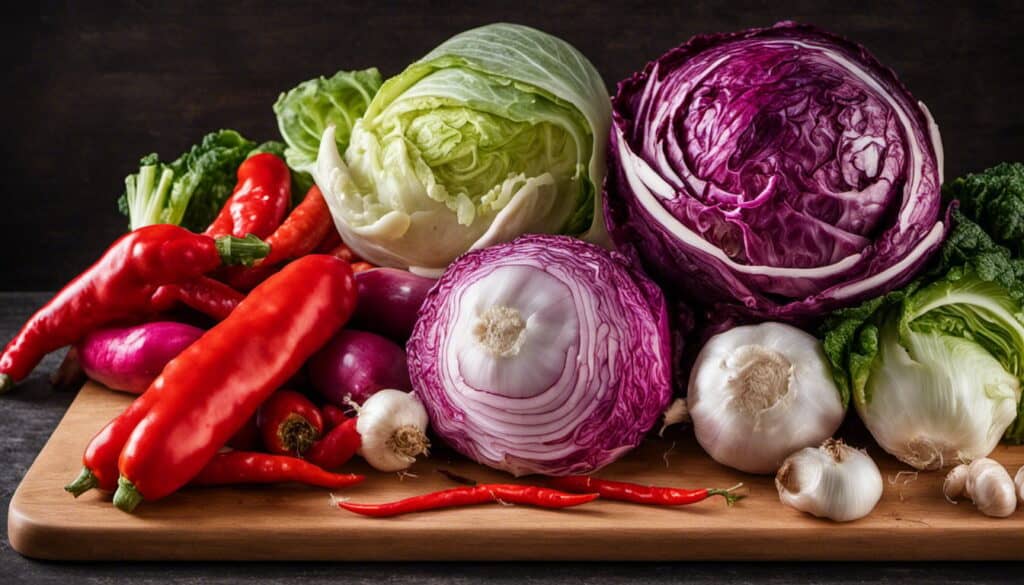
Kimchi is a traditional Korean dish that is made by fermenting vegetables with a variety of seasonings. The dish has a tangy, spicy, and slightly sour taste, and it is known for its many health benefits. In this section, we will discuss the primary ingredients, seasonings, and optional ingredients that are commonly used in making kimchi.
Primary Ingredients
The primary ingredient in kimchi is napa cabbage, which is a type of Chinese cabbage that is also known as wombok. The cabbage is cut into bite-sized pieces and salted to draw out excess moisture. Other primary ingredients include garlic, ginger, and shrimp, which are used to create the flavour base of the dish.
Seasonings
Kimchi is seasoned with a variety of ingredients, including rice flour, red pepper flakes, and anchovies. Rice flour is used to thicken the sauce, while red pepper flakes provide the dish with its signature heat. Anchovies are used to add depth of flavour to the dish.
Optional Ingredients
There are many optional ingredients that can be added to kimchi to enhance its flavour. Some of these ingredients include pear, radish, apple, fish sauce, and chili pepper. These ingredients are often used to balance out the spiciness of the dish and add a touch of sweetness.
When making kimchi, it’s important to use high-quality ingredients and to follow the recipe carefully. The dish is best when it’s allowed to ferment for several days, which allows the flavours to develop fully. Overall, kimchi is a delicious and healthy dish that is enjoyed by people all over the world.
The Art of Kimchi Fermentation

If you’re a fan of Korean cuisine, you’ve probably heard of kimchi. This spicy and tangy side dish is a staple in Korean cuisine and is enjoyed all around the world. But have you ever wondered how kimchi is made? The answer lies in the art of kimchi fermentation.
The Fermentation Process
The fermentation process is what gives kimchi its unique flavour and texture. To start, napa cabbage is soaked in a saltwater brine for several hours to soften it. Then, a mixture of seasonings, including chili powder, garlic, ginger, and fish sauce, is added to the cabbage.
Once the seasonings are mixed in, the cabbage is packed tightly into earthenware jars. These jars are then left to ferment at room temperature for several days.
During the fermentation process, lactic acid bacteria naturally present on the cabbage and in the environment begin to break down the sugars in the cabbage, creating lactic acid. This lactic acid gives kimchi its characteristic tangy flavour.
Role of Lactic Acid Bacteria
Lactic acid bacteria are crucial to the kimchi fermentation process. These bacteria convert the sugars in the cabbage into lactic acid, which not only gives kimchi its tangy flavour but also helps to preserve it. Lactic acid bacteria also produce other compounds that contribute to the flavour and texture of kimchi.
It’s important to note that not all lactic acid bacteria are created equal when it comes to kimchi fermentation. Some strains of bacteria are better suited to fermenting kimchi than others.
This is why traditional kimchi recipes often call for the use of specific ingredients, such as garlic and ginger, which are known to contain lactic acid bacteria that are beneficial for kimchi fermentation.
In conclusion, the art of kimchi fermentation is a time-honoured tradition in Korean cuisine. The fermentation process, with the help of lactic acid bacteria, is what gives kimchi its unique flavour and texture. If you’re interested in making your own kimchi, be sure to follow a trusted recipe and use earthenware jars for the fermentation process.
Tasting Kimchi

When it comes to tasting kimchi, there are a few key things to keep in mind. You’ll want to pay attention to the flavour profile, texture, and crunch of each brand you try. Here’s what you need to know:
Flavour Profiles
Kimchi can come in a variety of flavours, from spicy and sour to sweet and funky. Some brands may have a more pronounced umami flavour, while others may be more pickle-forward. It’s important to consider your personal taste preferences when trying different brands.
If you’re a fan of spicy foods, you may want to look for a kimchi that packs a punch. On the other hand, if you prefer milder flavours, you may want to opt for a brand that is less spicy.
Texture and Crunch
The texture and crunch of kimchi can also vary from brand to brand. Some may be more crunchy, while others may be softer and more tender. It’s important to consider what you’ll be using the kimchi for when evaluating its texture.
If you’re planning to use kimchi as a topping for tacos or burgers, you may want a crunchier texture. On the other hand, if you’re using it as a side dish, you may prefer a softer texture.
In summary, when tasting kimchi, pay attention to the flavour profile, texture, and crunch of each brand. Consider your personal taste preferences and how you plan to use the kimchi when evaluating each brand. With these tips in mind, you’ll be well on your way to finding your favourite kimchi brand.
Health Benefits of Kimchi
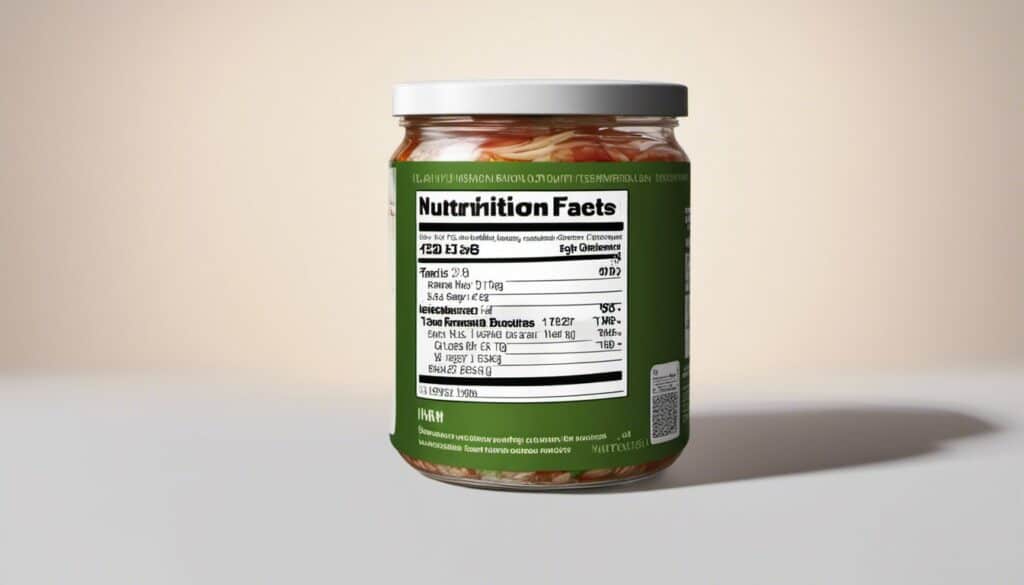
If you’re looking for a way to improve your gut health, kimchi is an excellent choice. This fermented Korean dish is made with cabbage, radishes, and other vegetables, and it contains a variety of beneficial nutrients.
Probiotics and Gut Health
One of the main health benefits of kimchi is that it is packed with probiotics. These are the same beneficial bacteria that you find in other fermented foods like yogurt and kefir. Probiotics are essential for maintaining a healthy gut microbiome, which is important for your overall health.
When you eat kimchi, you’re introducing these beneficial bacteria into your digestive system. These bacteria can help to improve digestion, boost your immune system, and even reduce inflammation in your body.
Vitamin C and Folate
Kimchi is also an excellent source of vitamin C and folate. Vitamin C is an antioxidant that helps to protect your cells from damage caused by free radicals. It also plays a role in collagen production, which is important for healthy skin and joints.
Folate, on the other hand, is important for cell growth and development. It’s especially important for pregnant women, as it can help to prevent birth defects.
When you eat kimchi, you’re getting a healthy dose of both of these important nutrients. Plus, because kimchi is a fermented food, it may be easier for your body to absorb these nutrients than it would be from other sources.
In conclusion, kimchi is an excellent choice if you’re looking to improve your gut health and get a healthy dose of beneficial nutrients. With its probiotics, vitamin C, and folate, it’s a great addition to any diet.
Top Kimchi Brands
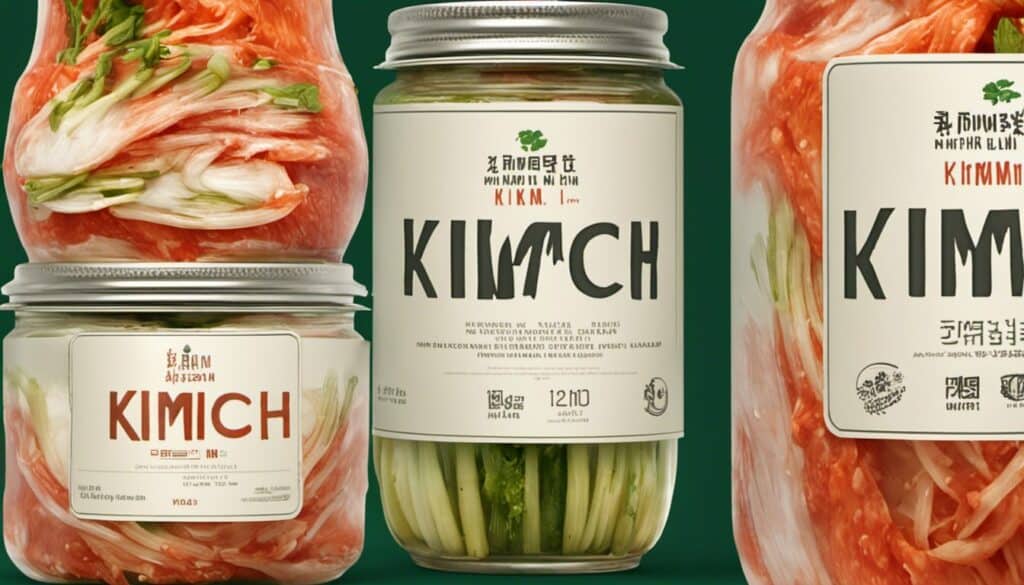
If you are a fan of kimchi, you know that not all brands are created equal. Here are some of the top kimchi brands that you should try:
Traditional Brands
- Tobagi: Tobagi is widely considered one of the best kimchi brands in the US. Their kimchi is made using traditional methods, which involves salting and fermenting the cabbage for several days. This process gives Tobagi kimchi its signature tangy and spicy flavour.
- Jongga: Jongga is another popular brand that offers a range of kimchi products. Their kimchi is made using high-quality ingredients and traditional fermentation techniques. Their cabbage kimchi is particularly delicious, with a perfect balance of sourness and spiciness.
- Mother in Law’s Kimchi: Mother in Law’s Kimchi is a family-owned business that has been making kimchi for over 25 years. Their kimchi is made using a special blend of spices and seasonings, which gives it a unique flavour that is both spicy and savoury.
Vegan Brands
- Sinto Gourmet: Sinto Gourmet offers a range of vegan kimchi products that are perfect for those who follow a plant-based diet. Their vegan kimchi is made using high-quality ingredients, including organic cabbage and Korean red pepper flakes. It’s also gluten-free and contains no MSG.
- Mama O’s Premium Kimchi: Mama O’s Premium Kimchi is another great option for vegans. Their kimchi is made using organic ingredients and traditional fermentation techniques. It’s also free from preservatives and artificial flavours.
- Wildbrine Kimchi: Wildbrine Kimchi is a vegan kimchi brand that offers a range of unique flavours. Their kimchi is made using organic cabbage and a special blend of spices and seasonings. It’s also raw and unpasteurized, which means it contains live cultures that are good for your gut health.
Conclusion
Whether you prefer traditional or vegan kimchi, there are plenty of great brands to choose from. Try a few different brands to find your favourite, and enjoy the delicious taste and health benefits of this Korean staple.
Kimchi in Vegan Diet
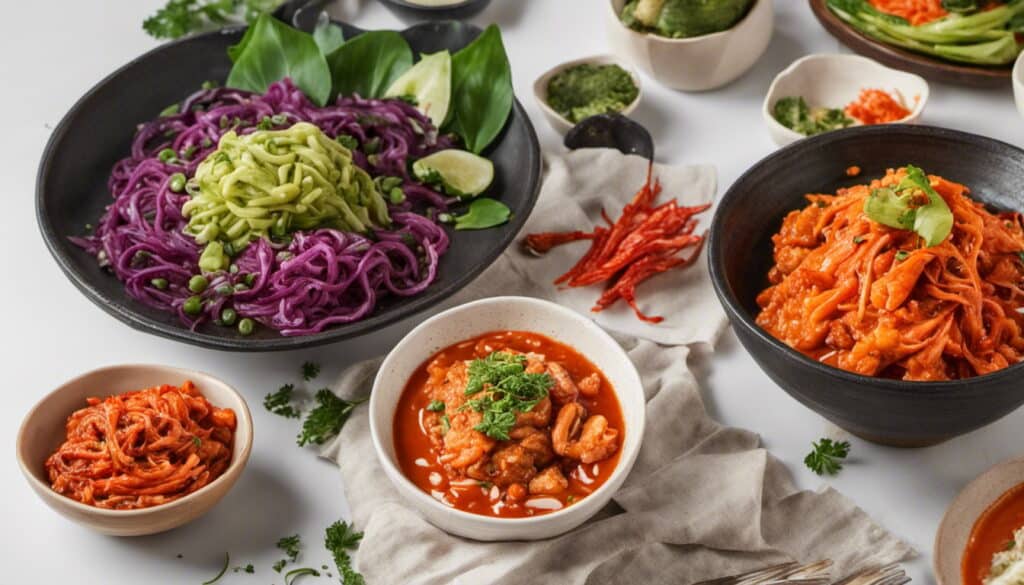
If you are following a vegan diet, you may be wondering whether kimchi is a suitable food option for you. The good news is that there are plenty of vegan kimchi brands available on the market. In this section, we will explore the benefits of incorporating kimchi into your vegan diet and provide some tips on how to do so.
Vegan Kimchi Options
When it comes to choosing a vegan kimchi brand, there are several options available. Some popular brands include Nasoya, Seoul Kimchi, Wildbrine, and Choi’s Kimchi Co. These brands offer a range of flavours and spice levels, so you can find one that suits your taste preferences.
It is worth noting that not all kimchi brands are vegan. Some traditional recipes may include fish sauce or shrimp paste. Therefore, it is important to check the label before purchasing to ensure that the product is vegan-friendly.
Incorporating Kimchi in Vegan Meals
Kimchi is a versatile ingredient that can be incorporated into a variety of vegan meals. Here are some ideas to get you started:
- Add kimchi to your favourite vegan sandwich or wrap for an extra burst of flavour.
- Use kimchi as a topping for vegan tacos or nachos.
- Mix kimchi into your favourite vegan stir-fry or noodle dish.
- Serve kimchi as a side dish with vegan sushi or rice bowls.
- Use kimchi as a topping for avocado toast or baked sweet potatoes.
In addition to being a tasty addition to your meals, kimchi also offers several health benefits. It is a fermented food, which means it contains beneficial bacteria that can promote gut health. Kimchi is also rich in vitamins and minerals, including vitamin C, vitamin K, and potassium.
In summary, kimchi is a great addition to a vegan diet. With plenty of vegan-friendly options available, it is easy to incorporate this flavourful ingredient into your meals. Whether you enjoy it as a side dish or use it as a topping, kimchi offers a range of health benefits that make it a valuable addition to any vegan diet.
Using Kimchi in Recipes
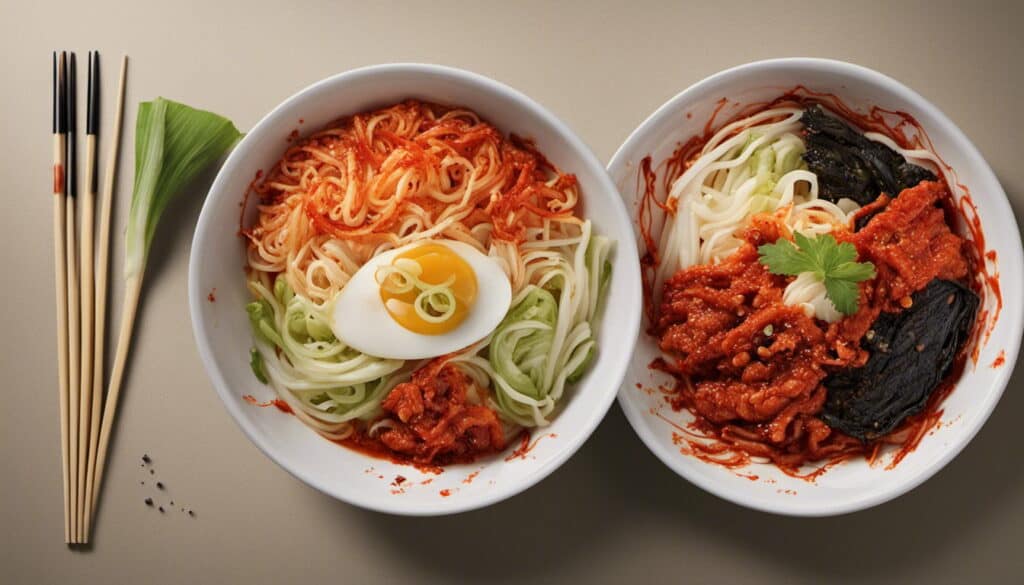
Kimchi is a versatile ingredient that can be used in a variety of recipes. Here are some ideas to get you started:
As a Side Dish
Kimchi is a popular side dish in Korean cuisine. It can be served on its own or as part of a larger spread. Here are some ideas for incorporating kimchi into your side dishes:
- Serve kimchi alongside grilled meats or fish for a spicy and tangy contrast.
- Add kimchi to scrambled eggs for a flavourful breakfast.
- Use kimchi as a topping for avocado toast or baked sweet potatoes.
- Mix kimchi into bone broth for a warming and nourishing soup.
In Main Dishes
Kimchi can also be used as a main ingredient in a variety of dishes. Here are some ideas for incorporating kimchi into your main dishes:
- Use kimchi as a condiment for burgers, hot dogs, or tacos.
- Stir-fry kimchi with noodles and vegetables for a quick and easy meal.
- Use kimchi as a pasta sauce by blending it with olive oil and Parmesan cheese.
- Make a kimchi fried rice bowl by topping rice with kimchi, fried eggs, and sliced green onions.
In Fusion Recipes
Kimchi can be used in fusion recipes that combine Korean flavours with other cuisines. Here are some ideas for incorporating kimchi into your fusion recipes:
- Make a kimchi quesadilla by filling a tortilla with kimchi, cheese, and leftover meat or vegetables.
- Use kimchi in a noodle bowl by topping cooked noodles with kimchi, sliced cucumbers, and a spicy peanut sauce.
- Make a kimchi grilled cheese sandwich by spreading kimchi on bread and adding cheese and sliced ham.
- Use kimchi as a topping for pizza, along with other Korean-inspired ingredients like bulgogi beef or gochujang sauce.
Overall, kimchi is a versatile ingredient that can add flavour and nutrition to a wide range of dishes. Experiment with different recipes to find your favourite way to use kimchi in your cooking.
Buying Kimchi

If you’re a fan of kimchi, you have two options: you can either make it yourself or buy it from a store. Both options have their advantages and disadvantages, so it’s important to know what you’re looking for before you make a decision.
Store-Bought vs Homemade
Store-bought kimchi is a convenient option for those who don’t have the time or inclination to make it themselves. It’s also a great option if you’re looking for a specific type of kimchi, as many stores carry a variety of brands and flavours.
However, store-bought kimchi can be expensive and may contain preservatives or other additives that you may not want in your food.
On the other hand, homemade kimchi is a great option if you’re looking for a more authentic and personalised taste. You can also control the ingredients that go into your kimchi, making it a healthier and more natural option. However, making kimchi can be time-consuming and requires some skill and knowledge.
Where to Buy
If you decide to go with store-bought kimchi, there are a few things to keep in mind. Look for brands that use non-GMO ingredients and are gluten-free if those are important to you. You may also want to consider the price and availability of the brand.
Here are a few places where you can buy kimchi:
- Supermarkets: Many supermarkets carry a variety of kimchi brands. Look for it in the Asian food section.
- Specialty Stores: Specialty stores that focus on Korean or Asian foods may have a wider selection of kimchi brands.
- Online: You can also buy kimchi online from various retailers, including Target.
No matter where you buy your kimchi, be sure to check the ingredients list and look for brands that use high-quality ingredients.
Frequently Asked Questions
What are the best kimchi brands for beginners?
If you’re new to kimchi, you might want to try Jongga. They have a range of less spicy and funky kimchi that are perfect for beginners. You can choose from 21 different types of kimchi. Another option is Wanting Kimchi, which offers vegan alternatives and even jellyfish banchan.
Which kimchi brand is best for probiotics?
If you’re looking for a kimchi brand with maximum gut-healthy benefits, you can try Mother In Law’s Kimchi. They use traditional fermentation methods and don’t add any preservatives or sugar. Another option is Gold Kimchi, which offers fresh kimchi made from salted and fermented vegetables like cabbage and radishes.
Is it safe to eat kimchi every day?
Kimchi is generally safe to eat every day, but it’s important to consume it in moderation. Too much kimchi can lead to digestive problems and high sodium intake. It’s best to consult with your doctor or a nutritionist to determine the right amount of kimchi for your diet.
Where can I find Tobagi Kimchi near me?
You can find Tobagi Kimchi at most Korean grocery stores or online retailers. Some popular online stores that sell Tobagi Kimchi include Amazon, Hmart, and Gmarket. You can also check with your local Korean restaurant to see if they sell Tobagi Kimchi or can recommend a nearby store that does.




